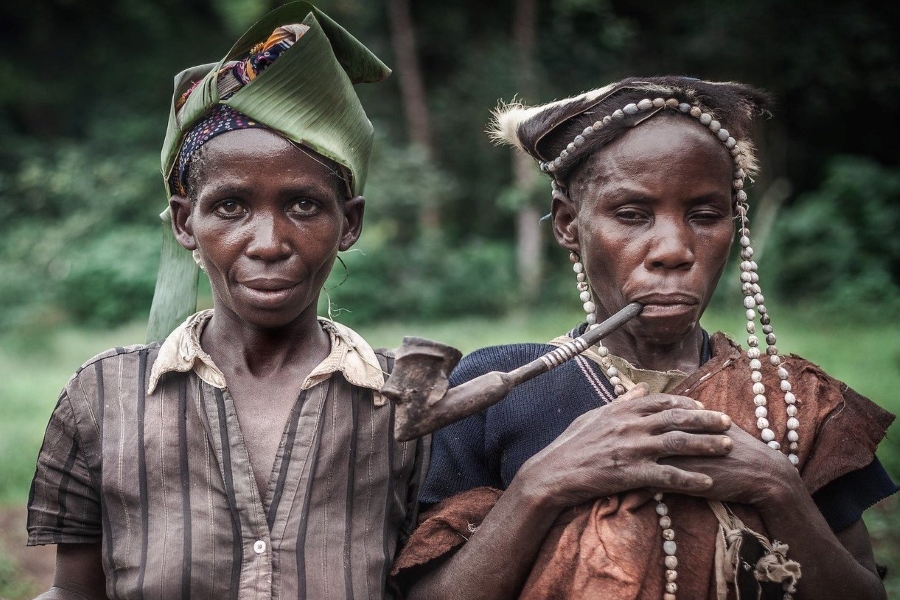How Should We Conserve And Protect Mountain Gorillas?

Overview:
The Mountain Gorilla, an awe-inspiring resident of central Africa’s misty slopes, has faced numerous threats to its survival. While conservation has made impressive strides, preserving the delicate balance between humans and these endangered primates demands ongoing dedication. Kyooma Gorilla Safaris delves into key conservation guidelines to help ensure the survival of mountain gorillas for future generations. So, conservation discussions often revolve around how we should protect and conserve these Gorillas.
Sustainable Tourism Practices (How Should We Conserve And Protect Gorillas?)
Tourism is crucial to gorilla conservation, but it must remain sustainable. Limiting visitor numbers, establishing clear trails, and enforcing strict regulations during gorilla treks reduce environmental impact on their habitats.
Gorilla Trekking Etiquette:
Educating visitors on trekking etiquette is essential in answering the “How Should We Conserve And Protect Gorillas?” question. Guidelines like maintaining distance, avoiding direct eye contact, and refraining from flash photography ease stress on gorillas and support a peaceful coexistence.
Community Engagement and Education:
Conservation needs to reach beyond the forest to local communities. Educating residents on gorilla conservation, providing alternative income options, and involving locals in decision-making creates shared responsibility for the gorillas’ well-being and answers the question of how protection and conservation efforts should be aligned.
Anti-Poaching Measures:
Strong anti-poaching tactics are vital to protect gorillas from illegal hunting. Well-trained, equipped rangers supported by tools like surveillance drones help deter poachers, answering questions about how we should take steps to protect and conserve them, ensuring gorillas remain safe.
Habitat Restoration and Protection:
Protecting and restoring gorilla habitats is critical. Reforestation, habitat restoration, and buffer zones safeguard against agricultural and infrastructural encroachment, keeping gorilla habitats intact. These actions reflect our determination how protect and conserve our environment.
Veterinary Care and Monitoring:
Regular health monitoring and veterinary care play a key role in gorilla conservation. Monitoring health, treating injuries or illnesses, and studying gorilla health provide essential insights into the methods by which we should conserve and protect gorillas.
International Collaboration:
Partnering with international conservation organizations, government bodies, and non-profits combines resources and expertise, enhancing efforts to protect gorillas and their environments. This collaboration exemplifies our commitment to understanding and implementing how we should conserve and protect them.
Research for Conservation Insights:
Ongoing research into gorilla behavior, ecology, and health is invaluable. These insights inform conservation strategies, improving responses to challenges that gorillas face. They directly address how protection and conservation efforts should be advanced.
Climate Change Mitigation:
Addressing climate change impacts is integral. Threats from climate change, such as altered vegetation and disease spread, can be countered by reducing carbon footprints and implementing sustainable practices. Thus, we should ensure that conservation and protection align with climate action.
Support for Conservation Organizations:
Financial support for reputable conservation organizations is a concrete way for individuals and businesses to help. Donations directly fund crucial programs, research, and community initiatives, showcasing support for answering the “how” in conservation and protection endeavors.
In Conclusion: A Collective Commitment to Gorilla Conservation
Protecting mountain gorillas is a shared responsibility that relies on sustainable tourism, community preservation, and international partnerships. By following these guidelines, we can secure the future of these apes and celebrate the success of conservation efforts across the mountains of central Africa, answering how we should conserve and protect these magnificent creatures together.



